 1994 BMW 7 Series (E38) Dimensions, Size & Specs
1994 BMW 7 Series (E38) Dimensions, Size & SpecsMeasurements of the 1994 BMW 7 Series, engineered for optimal performance and comfort
| Dimensions | |
|---|---|
| Length: | 4984 mm196.2 in16.4 ft |
| Width: | 1862 mm73.3 in6.1 ft |
| Height: | 1425-1435 mm56.1-56.5 in4.7-4.7 ft |
| Trunk Capacity: | 500 liter17.7 cu ft |
| Weight Specifications | |
| Curb Weight: | 1670-1960 kg3682-4321 lbs |
| Maximal permitted Weight: | 2205-2495 kg4861-5501 lbs |
| Tire Specifications | |
| Rims Size: |
|
| Tire Sizes: |
|
The BMW 7 Series (E38) represents the third generation of BMW's flagship luxury sedan, produced from 1994 to 1998. As a prominent executive sedan, the E38 combines classic BMW engineering with luxurious comfort and was widely acclaimed for its sophisticated design and advanced technology for its time. Measuring 4984 mm (196.1 inches) in length, 1862 mm (73.3 inches) in width, and standing between 1425 and 1435 mm (56.1 to 56.5 inches) in height, the E38 delivers a well-proportioned and authoritative presence on the road. The vehicle's curb weight ranges from 1670 to 1960 kg (3683 to 4321 lbs), reflecting the wide array of engine options and configurations that catered to luxury and performance balance. The maximum allowed weight varies between 2205 and 2495 kg (4861 to 5499 lbs), ensuring both robust performance and safety compliance. The luggage compartment offers a convenient capacity of 500 liters (17.7 cubic feet), suitable for executive travel or family trips, balancing trunk space with stylish sedan design. Equipped with 16-inch rims, the BMW 7 Series (E38) supports tire sizes of 215/60 R16, 215/65 R16, and 235/60 R16, contributing to its stable ride and handling characteristics. Overall, the BMW E38 is celebrated as a significant model in the 7 Series lineage, blending spaciousness, luxury, and driving dynamics in a mid-1990s sedan package, making it a compelling choice for enthusiasts and luxury car buyers interested in a timeless executive vehicle.
Discover the standout features that make the 1994 BMW 7 Series a leader in its class
Have a question? Please check our knowledgebase first.
The BMW 7 Series (E38) sedan measures 4984 mm (196.3 inches) in length, 1862 mm (73.3 inches) in width, and has a height range of 1425 to 1435 mm (56.1 to 56.5 inches). These dimensions position the E38 as an impressive full-size luxury sedan with a commanding road presence, maintaining an elegant yet robust visual profile typical of BMW's design ethos in the mid-90s.
The curb weight of the BMW 7 Series (E38) varies between 1670 kg (3682 lbs) and 1960 kg (4321 lbs), depending on the specific model and options. The maximum permissible weight ranges from 2205 kg (4859 lbs) to 2495 kg (5499 lbs). This variance accommodates different powertrains and feature sets, factoring in passengers, cargo, and fuel load within safe operational limits.
The BMW 7 Series (E38) offers a spacious luggage capacity of 500 liters (approximately 17.7 cubic feet). This trunk space is competitive with other luxury sedans from the 1990s, enabling ample storage for travel luggage and everyday needs. The volume is thoughtfully designed to balance both cargo capacity and rear passenger comfort without compromising the sedan's sleek exterior.
The standard rim size for the BMW 7 Series (E38) is 16 inches, paired with multiple factory tire size options including 215/60 R16, 215/65 R16, and 235/60 R16. These sizes were chosen to optimize ride comfort, handling, and performance, reflecting BMW's commitment to sporty luxury driving dynamics in a full-sized sedan.
The BMW 7 Series (E38), with a length of about 4.98 meters (16.3 feet) and width of 1.86 meters (6.1 feet), will fit into a typical residential garage in most countries, as standard garages are often around 6 meters (20 feet) deep and 2.4 to 3 meters (8 to 10 feet) wide. However, tight garage spaces or those with storage along the sides may pose a tight fit, so careful maneuvering is advised.
Compared to the previous generation E32 (produced 1986–1994), the E38 7 Series is slightly larger and more refined dimensionally. The E38's length extended to 4984 mm compared to the E32's approximately 4930 mm, while width and height saw minor adjustments for improved aerodynamics and passenger comfort. The E38 incorporated a more modern, sleek design, with a focus on luxury and technology that outpaced its predecessor significantly.
The BMW 7 Series (E38) competes directly with class leaders such as the Mercedes-Benz S-Class (W140) and the Audi A8 (D2) of the same era. Dimensionally, it is slightly shorter than the W140 Mercedes-Benz but wider than the Audi A8 (D2). Its design emphasizes sportiness and driver engagement more than its rivals, which tend towards grander, more opulent styles. The E38 strikes a balance between dynamic driving and luxury, making it highly competitive in size and overall package during the mid-90s luxury sedan battles.
The BMW 7 Series (E38) has a height range between 1425 mm (56.1 inches) and 1435 mm (56.5 inches), allowing for generous interior headroom typical of a full-size sedan. This height comfortably accommodates taller passengers, especially in the rear seats, while maintaining a low center of gravity for enhanced handling. The subtle height variations depend on suspension setups and optional equipment but generally do not impact overall cabin space.
The BMW 7 Series (E38) typically uses tire sizes of 215/60 R16, 215/65 R16, and 235/60 R16, all mounted on 16-inch rims. The 215 mm width tires favor comfort and efficiency, while the 235 mm width option enhances grip and handling dynamics. The tire profiles (60 and 65) balance sidewall height to absorb road imperfections and provide a sporty yet smooth ride, maintaining the luxury driving experience BMW is known for.
The BMW 7 Series (E38) introduced numerous technological advancements and luxury features that set new standards in its class during the mid-1990s. It was the first 7 Series generation to offer curtain airbags, GPS navigation systems, and advanced traction control. The E38 also introduced optional V12 engines, adaptive suspension, and refined interior ergonomics. These innovations enhanced safety, comfort, and driving dynamics, solidifying its reputation as a pioneering luxury sedan.
Discover similar sized cars.
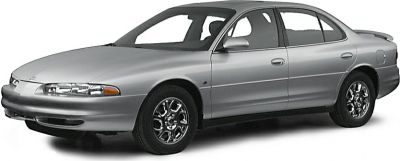
| Production: | 1998-2002 |
|---|---|
| Model Year: | 1998 |
| Length: | 4975 mm195.9 in |
| Width: | 1870 mm73.6 in |
| Height: | 1440 mm56.7 in |

| Production: | 2020-present |
|---|---|
| Model Year: | 2020 |
| Length: | 4978 mm196.0 in |
| Width: | 2126 mm83.7 in |
| Height: | 1466 mm57.7 in |
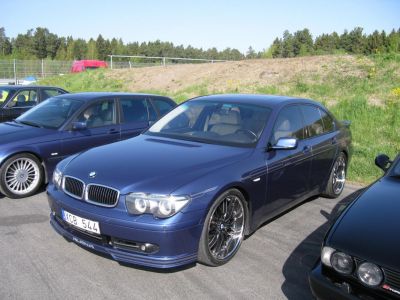
| Production: | 2005-2008 |
|---|---|
| Model Year: | 2005 |
| Length: | 5030-5170 mm198.0-203.5 in |
| Width: | 1900 mm74.8 in |
| Height: | 1480 mm58.3 in |

| Production: | 2020-present |
|---|---|
| Model Year: | 2020 |
| Length: | 4978 mm196.0 in |
| Width: | 2126 mm83.7 in |
| Height: | 1466 mm57.7 in |
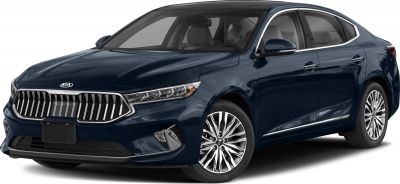
| Production: | 2019-2021 |
|---|---|
| Model Year: | 2019 |
| Length: | 4996 mm196.7 in |
| Width: | 1869 mm73.6 in |
| Height: | 1471 mm57.9 in |

| Production: | 2019-present |
|---|---|
| Model Year: | 2019 |
| Length: | 4995 mm196.7 in |
| Width: | 1870 mm73.6 in |
| Height: | 1470 mm57.9 in |
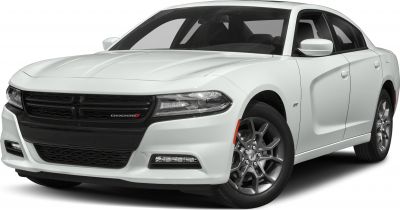
| Production: | 2015-2019 |
|---|---|
| Model Year: | 2015 |
| Length: | 5040-5100 mm198.4-200.8 in |
| Width: | 1905 mm75.0 in |
| Height: | 1480 mm58.3 in |
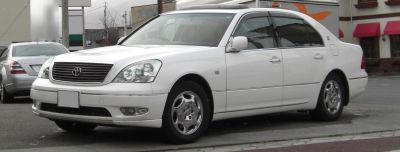
| Production: | 2000-2003 |
|---|---|
| Model Year: | 2001 |
| Length: | 4995 mm196.7 in |
| Width: | 1830 mm72.0 in |
| Height: | 1470 mm57.9 in |
